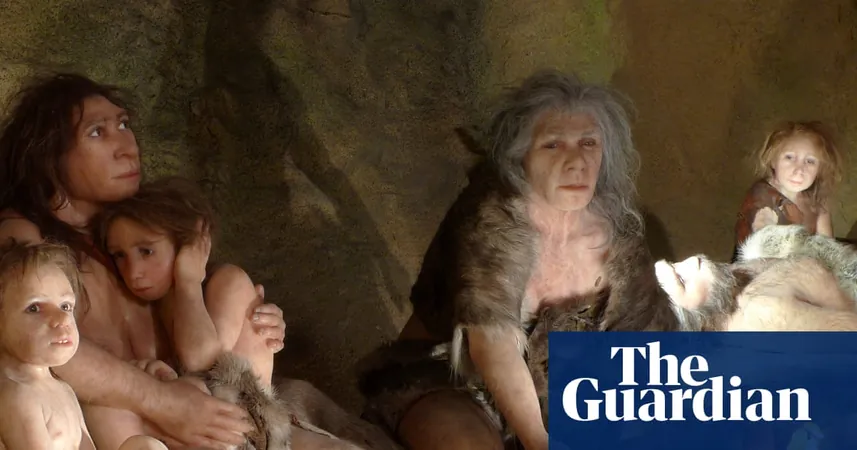
Neanderthals Had Unique Dinner Preferences: Shocking New Study Reveals!
2025-07-17
Author: Ming
Neanderthal Dining: More Diverse Than You Thought!
Forget the cooking battles of today; even Neanderthals had their own culinary debates! A groundbreaking study suggests our ancient relatives had unique preferences when it came to preparing their meals.
Researchers exploring animal bones from two northern Israeli caves have discovered that different groups of Neanderthals, coexisting in the same era, butchered animals in distinct ways. This revelation sheds light on the cultural diversity of Neanderthals beyond mere survival skills.
Anaëlle Jallon, a key researcher from the Hebrew University of Jerusalem, emphasized that diversity among the Neanderthals reveals that even for essential survival activities, they had various methods and techniques.
Unearthing the Past: The Caves' Secrets!
The study, published in the journal *Frontiers in Environmental Archaeology*, analyzed 249 bone fragments from the Amud cave, dating back 70,000 to 50,000 years, and 95 samples from the Kebara cave, which are approximately 60,000 to 50,000 years old.
Located 70km apart, these caves were winter homes for Neanderthals, who utilized similar flint-based tools. Surprising patterns emerged: Amud cave showed more burned and fragmented bones, while Kebara contained a notable number of larger animal bones, like aurochs.
The Art of Butchering: More Than Just Survival!
With a meticulous examination of cut marks on bones, specifically 43 from Amud and 34 from Kebara, researchers noticed striking differences. Even gazelles, a common meal, were butchered differently between the two locations.
According to Jallon, Amud bones displayed a greater density of intricate cut marks, indicating a more complex butchering technique. This raises fascinating questions: Did different Neanderthal groups have unique preferences for certain meats, or did they simply learn differently?
A Rich Tapestry of Neanderthal Life!
Dr. Matt Pope from University College London, who wasn't part of the research, weighed in, affirming that this study highlights the diverse ways Neanderthals crafted tools and interacted with their environment.
He brilliantly compared the cut marks to footprints or hand marks on cave walls, showcasing that they reflect the very gestures and movements of these ancient people. Future research promises to dive deeper into these intriguing variations.
In conclusion, this study is a compelling reminder that Neanderthal culture was far from monolithic. Instead, it was a rich tapestry of different groups, each with their own unique practices, coexisting in the same landscape!



 Brasil (PT)
Brasil (PT)
 Canada (EN)
Canada (EN)
 Chile (ES)
Chile (ES)
 Česko (CS)
Česko (CS)
 대한민국 (KO)
대한민국 (KO)
 España (ES)
España (ES)
 France (FR)
France (FR)
 Hong Kong (EN)
Hong Kong (EN)
 Italia (IT)
Italia (IT)
 日本 (JA)
日本 (JA)
 Magyarország (HU)
Magyarország (HU)
 Norge (NO)
Norge (NO)
 Polska (PL)
Polska (PL)
 Schweiz (DE)
Schweiz (DE)
 Singapore (EN)
Singapore (EN)
 Sverige (SV)
Sverige (SV)
 Suomi (FI)
Suomi (FI)
 Türkiye (TR)
Türkiye (TR)
 الإمارات العربية المتحدة (AR)
الإمارات العربية المتحدة (AR)